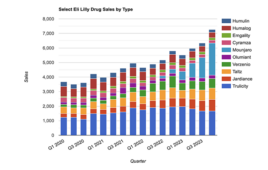Scientists at Albert Einstein College of Medicine of Yeshiva University have identified a small intracellular protein that helps cells commit suicide. The finding could lead to drugs for combating cancer and other diseases characterized by overproduction of cells. The research was led by the late Dennis Shields, Ph.D., a professor in Einstein’s Department of Developmental and Molecular Biology for 30 years, who died unexpectedly in December.
In response to stress or as a natural part of aging, many cells undergo programmed suicide, also known as apoptosis. Cancer cells often become immortal and dangerous by developing the ability to suppress apoptosis.
A decade ago apoptosis was thought to be directed solely by the nucleus and mitochondria of cells. Dr. Shields’ laboratory showed that a cellular organelle known as the Golgi apparatus also plays a role in apoptosis.
The Golgi package proteins and other substances made by cells and direct them to their destination within the cell. A protein called p115 is vital for maintaining the structure of the Golgi. In earlier research, Dr. Shields’ group demonstrated that the Golgi’s p115 protein splits into two pieces early in apoptosis and that the smaller of these protein fragments — 205 amino acids in length — helps to maintain the cell-suicide process.
In the present study, the Einstein researchers identified the smallest region of this p115 protein fragment that is required for apoptosis: a peptide of just 26 amino acids in length that exerts its apoptotic action by traveling to the nucleus.
Release Date: January 14, 2009
Source: Albert Einstein College of Medicine
Filed Under: Drug Discovery




